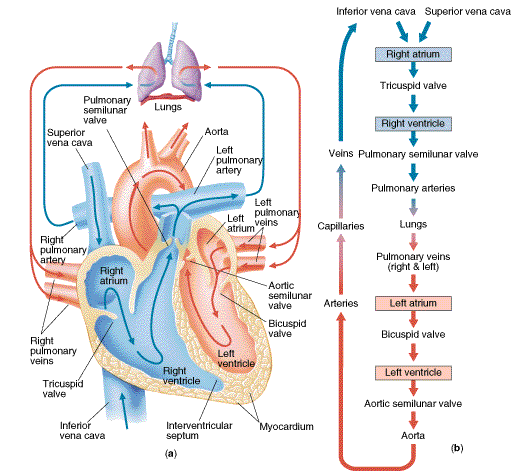Cards In This Set
| Front | Back |
|
What is the leading cause of death in the US?
|
Cardiovascular disease
|
|
How many deaths are from cardiovascular disease each year?
|
1 million
|
|
What is the most powerful contributor to cardiovascular disease?
|
Hypertension
|
|
What are some S/S for cardiovascular disease?
|
-chest pain
-dyspnea
-fatigue
-syncope
-palpitations
|
|
How does blood flow through the heart?
|
 -blood enters through the superior and inferior vena cava -forward flow is the movement of blood from the right atrium, to right ventricle, pulmonary artery, pulmonary veins, left atrium, left ventricle -finally out through the aorta |
|
What are the two heart sounds ?
|
S1 and S2
|
|
What does S1 heart sound result from?
|
From the closure of the mitral and tricuspid valves and markes the beginning of systole
|
|
What does S2 heart sound result from?
|
From the closure of aortic and pulmonic valves, usually the loudest
|
|
What is an electrocardiogram used for?
|
To assess the heart rate, rhythm, conduction delays, and coronary perfusion
|
|
How is an electrocardiogram monitored?
|
Via Telemetry
|
|
Heart rate greater than 100bpm is known as ________.
|
Tachycardia
|
|
Heart rate less than 60bpm is known as _________
|
Bradycardia
|
|
What are some risk factors of cardiovascular disease?
|
-cigarette smoking
-high blood cholesterol levels
-high blood pressure
-obesity
|
|
What is also known as heart attack?
|
MI
|
|
What happens when a person suffers an MI?
|
Reduced blood flow of one of the coronary arteries, resulting in myocardial ischemia and necrosis.
|



